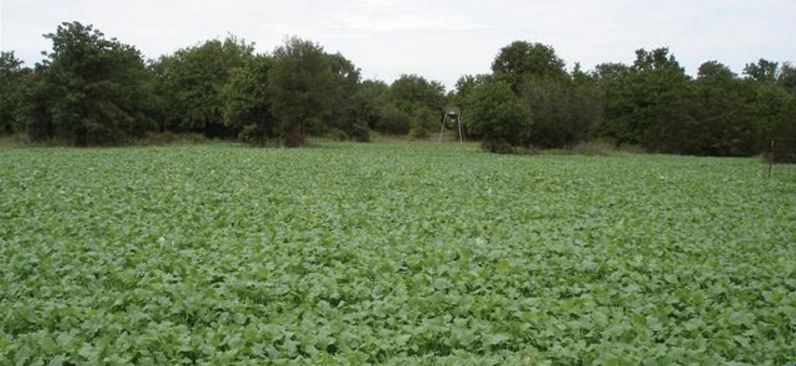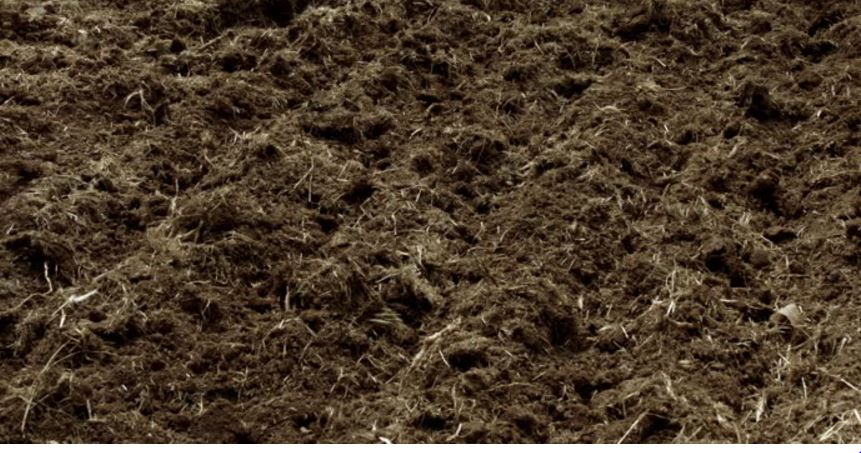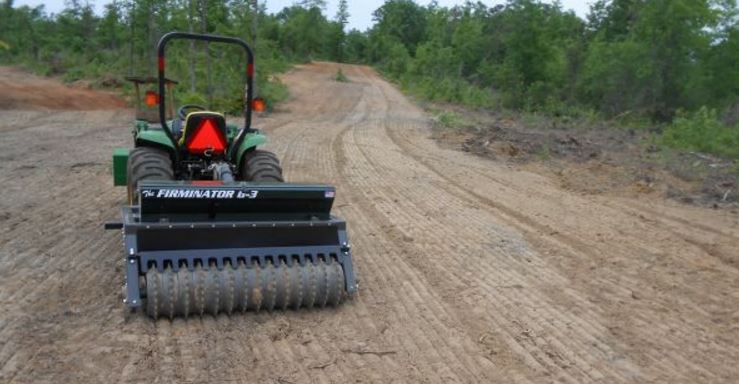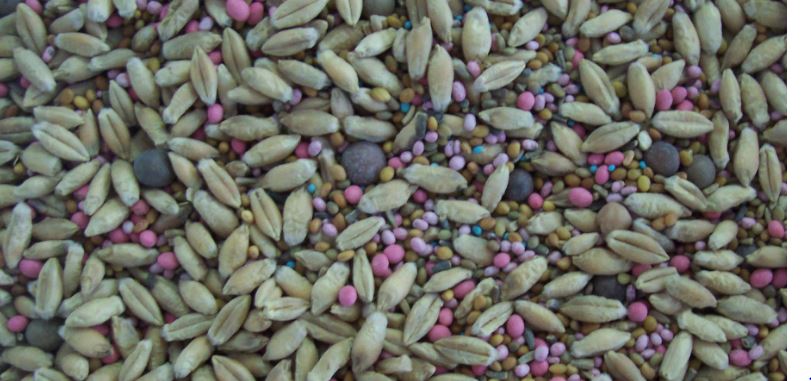Food plots have long been used as a way to improve whitetail deer hunting on properties. Establishing food plots for deer is not a difficult process and can be usually done with minimal investment. A basic understanding of the soil and food preferences will help make your deer food plots successful. When done correctly, food plots can provide opportunities to view whitetail or develop a healthier deer population.
Food Plot Goals – The goals of establishing a food plot or plots should always be the first consideration. Before investing time, labor, and money, ask yourself why you want to establish food plots for deer. Do you hope to increase the health and quality of the deer on your land?
Do you simply want to increase your chances of seeing more bucks? Ask yourself, family members, or hunting lease members these questions and prepare a list of goals for your food plot project. Once these are identified, carrying through with the food plot will be much easier.

Preparing Deer Food Plot Sites – Soil is the building block from which plants grow, and without proper soil nutrient levels, plants will not achieve their maximum yield in your deer food plot. Sampling and testing the soil is the only way to know for certain the present nutrient levels and which nutrients must be added to achieve optimum plant growth.
Obtain a copy of your county soil survey from your local Soil and Water Conservation District (SWCD) office and a USGS topography map as you begin the planning process.
Using a shovel and a plastic bucket, walk in a zigzag pattern through the food plot you wish to establish. Take random soil samples to a depth of six to eight inches and place the samples in the bucket. The key to soil sampling is taking random samples. The more samples you take, the more accurate your soil test results.

Generally speaking, areas up to 25 acres in size can be sampled as one field. However, if there are varying soil types or obvious differences in a field that may be unique, you may want to consider isolating these areas and sampling them as separate units prior to choosing seeds and planting your plot.
After completing the sampling process, thoroughly mix the soil in the bucket and take enough out to fill the sample bag provided by the lab. Sampling kits are available through your local ag extension office or from various commercial soil-testing labs. If the soil is moist, allow it to air dry before mailing. Once dried, follow the instructions on the soil test form for mailing.
You should receive your soil test results within two weeks. The report will explain your present soil nutrient levels and make recommendations for lime and fertilizer based on the crops you intend to plant. As a rule of thumb, soil testing should be done once every three years.
If you have questions about your soil test report, contact your county extension office and talk about your test, as well as food plot ideas.
Sizing Food Plots for Deer – As you consider your proposed site, make sure you give some consideration to the size of your food plots. Your plot can be any size, but it should be large enough to be functional to whitetail and suitable for deer hunting.
To be effective, your plot should be at least 1,200 square feet. No more than 1/4 to 1/2 acre of food plot is usually needed for each 20 acres of land. If your food plot is expected to provide winter cover, then plots of an acre or more are likely necessary.

Food plots are usually planted in long strips adjacent to good winter and/or escape cover such as a brushy fence row, field border, windbreak, woodland edge, or wetland. Food plots that are rectangular in shape are much more attractive to deer than square shaped plots.
Strip width can vary, but the wider the strips, the more food created for whitetail deer, but the further they must move away from cover. The closer the food plot is to good dense cover, the more use it will have by wildlife.
Planting Food Plots for Whitetail – Two factors will help determine which crops to plant in your food plot. The first is your goal for the project. The second is the habitat surrounding the proposed plot site. If acres and acres of wheat or soybeans surround your property, planting more of the same probably will not attract deer to your property. However, if there are none of these fields in your area, you will readily attract whitetail deer to your land.
Where Do I Get Food Plot Seed? – Food plot seed may be purchased from businesses that supply seeds to farmers and ranchers. Check with farmers in your area. They may be able to suggest a particular seed dealer. In addition, many wildlife organizations may provide seeds for food plots.

Some county soil and water conservation districts also sell wildlife food plot seed. Also check with any sporting goods stores in your area. Many of these businesses sell pre-packaged food plot seed mixes.
Food Plot Equipment – Many food plots can be established with a minimum investment in equipment. A small tractor, disk, and corn planter or grain drill will often do the job. If you own an ATV, there are several manufacturers of seeders, fertilizer spreaders, and other attachments designed specifically for use with an ATV.
For small areas, once the area has been prepared, planting the seeds by hand can be done successfully. Many soil and water conservation districts have food plot equipment for rent on a per-acre basis. In some cases, local farmers can be hired to complete the tillage and planting.
Establishing food plots is a good idea, but make sure you know why food plots will work for you. Keep in mind there is a difference between a food plot that actually provides supplemental nutrition for animals in the area and a deer hunting plot, which is simply used to attract deer for harvest. If you do decide to plant, make sure you plant the best soil in your area and follow the tips outlined above.